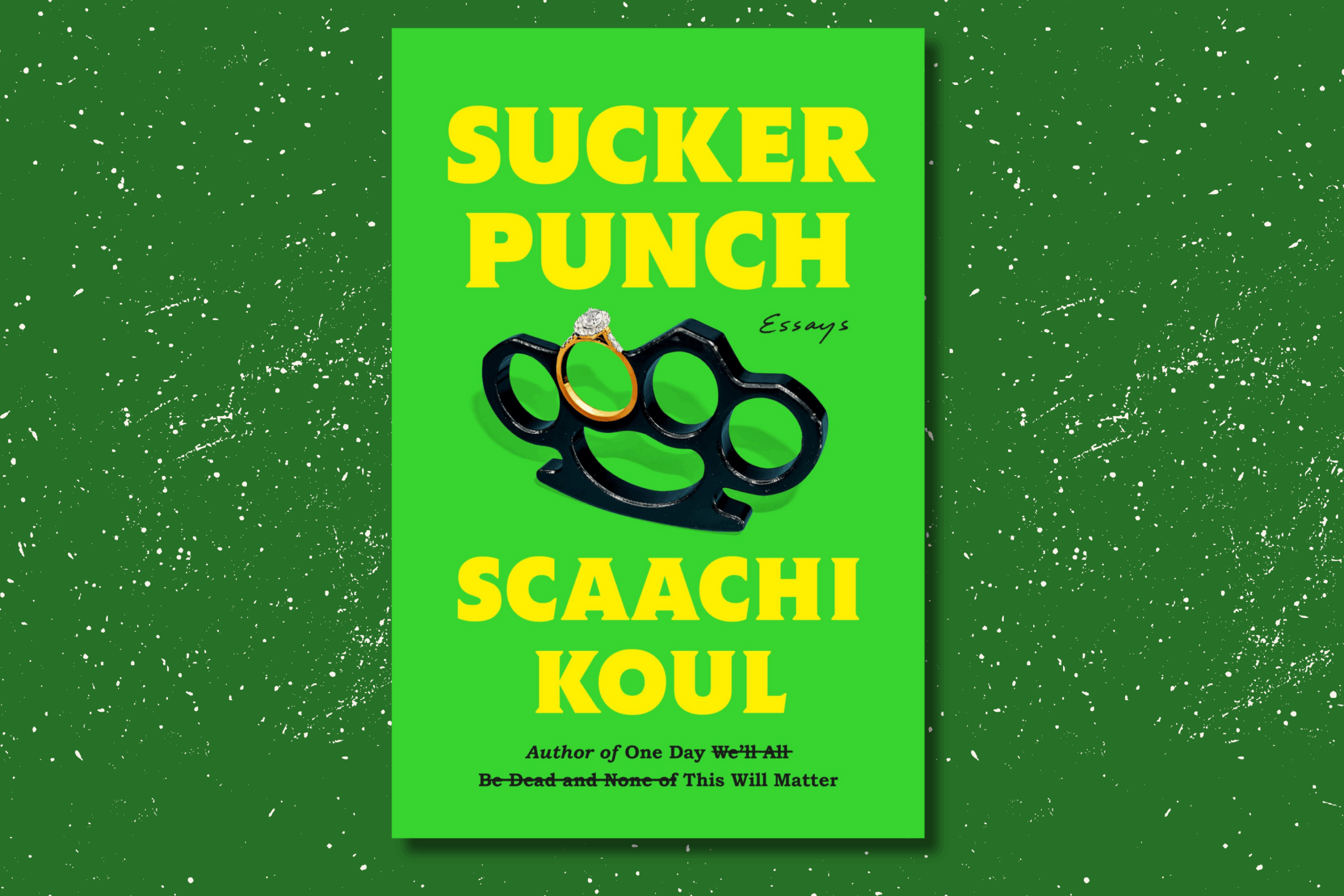The streaming giant’s unwavering embrace of machine learning threatens to overshadow what makes music meaningful in the first place
By Matthew Hanick

Nothing compares to the thrill of discovering your new favourite song. It’s those first few magical listens — sometime before you ruin it for yourself — that triggers a surge of dopamine, igniting your nervous system and making it not only inescapable but pure audio bliss.
In the age of streaming, this rush is anything but random. In fact, multinational subscription services are practically working overtime to manufacture the sensation. Streaming giants like Spotify, Apple Music and Soundcloud are now increasingly investing in and relying on artificial intelligence (AI) to analyze user data. From simple genre preferences to contextual data, AI algorithms learn from and adapt to your listening habits to provide better personalized music recommendations.
Spotify’s brush-up with AI began about a decade ago. In 2015, the Swedish audio streaming and media service provider launched Discover Weekly, a personalized playlist that uses AI algorithms to recommend new music based on listening history. In December 2016, we received Spotify Wrapped, the annual tradition that uses AI to provide personalized insights and statistics. In June 2016, Spotify released Daily Mix — multiple playlists that cluster your favourite artists into similar, numbered groupings.
Our relationship with AI has changed since then. In the last two years, AI has become wildly popular. Why? “It’s instantly accessible on a level that you don’t require code, which is why it feels like it’s everywhere now,” says Angela Misri, author and assistant professor at Toronto Metropolitan University’s School of Journalism, whose research interest lies in AI and ethics. For better or worse, the introduction of easily accessible generative AI at the user level has rapidly transformed how we interact with everyday services, including music streaming.
In February 2023, Spotify launched its DJ X function — an eerily impersonal yet no-nonsense AI guide that plays your favourite hits. Most recently, in April 2024, Spotify debuted its AI Playlist (in beta for Premium subscribers) and granted Canadians access later that year in September. The new feature allows users to create playlists based on text descriptions rather than just artists or genres.
It’s safe to say people aren’t happy about these new features. Not only are people turned off, but the growing reliance on AI in music reignites discussions about its ethical implications on the more conscious consumer.
Privacy rights
“I don’t know that people understand that about Spotify and music streaming software, but it’s becoming very clear that they are using that data,” says Misri.
Misri points out the importance of knowing what data is being collected and understanding how it influences one’s listening experience. Spotify collects user data like listening history, skipped songs, downloads and social interactions to power its recommendation systems. These systems use two main approaches: collaborative filtering, which predicts future preferences based on past behaviour and content-based filtering, which analyzes user-item relationships, including demographic data.
Using this information, Spotify’s AI creates a tailored experience on the home screen to keep users engaged. While this personalization enhances music discovery, it raises questions about the trade-off between user privacy and convenience — one that many listeners accept without much thought.
Misri says Spotify users should be aware that the service tracks their listening habits and should actively question the content they are recommended. Critics have argued that Spotify’s AI is both invasive and prone to racial and gender bias, as it replaces user-reported preferences with passive data collection, raising concerns about privacy and algorithmic discrimination.
Intellectual property
If Spotify is known for anything, it’s how the company stingily compensates its artists. Generally, artists earn a fraction of a cent per stream. This is bad enough for smaller artists, but the rise of AI-generated music has made things more complicated under Spotify’s revenue system.
Since payment is tied directly to the number, people are using bots to artificially inflate stream counts of AI-generated songs by repeatedly playing specific tracks, creating the illusion of popularity and increasing revenue for the “creators”. Since Spotify pays less in royalties to these production companies than it would to independent or label-signed artists, this arrangement benefits the platform financially while disadvantaging legitimate musicians.
At the same time, the rise of AI-generated music blurs the line between human artistry and machine-made sound, challenging long-held ideas about creativity and authenticity.
“I don’t think that AI-generated songs have a place within the music industry or arts and culture in general,” says Karlie Rogers, a staff writer with Exclaim!. “But we are kind of being forced to tolerate AI, which I don’t think is right.”
AI-generated music, individuals’ and artists’ privacy rights and intellectual property are just the tip of the iceberg. Increased losses are expected across the industry, reducing opportunities for human creativity at a time when artists increasingly struggle against corporate interests. As AI music composition becomes more accessible, these issues will become harder to ignore.
Environmental impact
Music is life, but it can also bring us closer to the end of it. When you stream a song, your devices access electronic files stored on active, cooled servers inside massive facilities known as data centres. These centres require large amounts of electricity to power their servers and vast amounts of fresh water to keep them from overheating when retrieving and transmitting data.
Although streaming’s environmental impact is often invisible to users, it can add up. As a streaming service, Spotify has a significant ecological footprint, but its AI-driven infrastructure compounds this issue. Spotify’s machine learning algorithms require immense computing power, increasing both electricity consumption and water usage for cooling.
Unlike traditional music distribution, which requires physical materials but has a fixed impact, AI-driven streaming continuously demands resources with every play. AI-driven demand is worsening water scarcity, with projections showing its consumption could soon rival industries like cattle and textiles.
As AI-generated music becomes more common, it further amplifies resource use while displacing human artists. Without sustainable solutions, the environmental cost of streaming — often overlooked — will continue to rise. Addressing these challenges requires greater transparency from tech companies and investment in greener data infrastructure.
Art or algorithm
Spotify has relied on AI and, by extension, our data, for a while now. But it’s clear that as AI becomes more integrated into art and user experiences, we find ourselves increasingly caught between valuing autonomy and personalization.
“We like being served what we like,” says Misri. “I would be offended if the algorithm didn’t understand me.” Different users receive different recommendations based on their listening habits. Misri, whose spouse is a musician, recognizes that many enjoy this personalization. While she easily takes to new pop music recommendations, her husband prefers eclectic folk and resists AI-driven curation.
The question is whether we continue to trust Spotify and the music industry throughout its steadfast adoption of AI. Let’s face it — AI doesn’t seem to be going away anytime soon. In late 2023, CNN reported that Spotify laid off over 2,000 employees that year in anticipation of its current AI features. This month, Spotify reported strong fourth-quarter earnings in 2024, achieving its first full year of profitability after 16 years.
Yet, Spotify’s steadfast adoption of AI comes at the cost of human artistry. In the same way Netflix panders to the “casual viewer” — Spotify deliberately reduces the creative and exploratory listening process. In Spotify’s introduction to their AI playlists, they coin these playlists on the platform to be “hotbeds for discovery, fostering deep relationships between artists and fans.” On the contrary, these playlists drive music discovery in the opposite direction by maximizing streams and revenue rather than fostering meaningful connections between artists and listeners.
“What makes music so special is that it is coming from an actual person; that is what artistry is, in my opinion. To have [music] be completely devoid of that and be shoved out of a machine or a computer — it’s just like, what’s the point in making all this?” says Rogers.
The fear is of a homogenous system that rewards quantity over quality, creating an environment where low-effort music can infiltrate playlists and, worst of all, makes listeners less likely to discover emerging talent. What is already a precarious industry for creatives is further being destabilized while deepening our ecological footprint.
What can we do?
Although AI is not a new technology, it threatens everything we hold sacred. What Spotify and many other services don’t understand is that AI diminishes the hands-on user experience people have come to love. As music lovers, we do not merely listen to songs but actively shape the music landscape by discovering, recommending and creating alongside our favourite artists. AI cannot replace us in this respect.
“It is going to become kind of normal, which I’m not personally happy about. I think there will be more effort to make sure that AI usage is disclosed,” says Rogers. “Since [Generative] AI is so destructive to the environment, I really hope that that is not the case, but it might be something that continues to be pushed on to us.”
In the coming years, listeners will likely need to fight out the application of AI in streaming. Even when it doesn’t feel necessary, corporations are looking to implement the technology with little regard for its impact on the consumer, their rights, or the world at large.
In our global world order, corporate and tech monopolies exert enormous control over our lives. Yet, there exists a growing divide separating those who make decisions from those who bear the consequences. The reality is that we already use and are being used to train AI more than we know. Every interaction we have with digital platforms, from browsing Spotify to posting on social media, feeds into the algorithms that shape our experiences. But this doesn’t mean we are powerless.
As machine learning becomes more integrated into art and user experiences, we will need to become more conscious of our AI usage, set firm boundaries on individual data and privacy and work to mitigate its impact on all industries. Since it’s our data in the first place, we should recognize our collective power to drive change: demanding privacy legislation, consumer protections, or boycotting Spotify altogether if necessary. On an individual level, we can also work to cut back on our digital footprint–reducing our streaming time or switching to physical media.
By demanding transparency, accountability and ethical practices, we can mitigate the impacts of AI altogether. Besides, we don’t need AI to help us make playlists; that’s what friends are for.





Leave a Reply